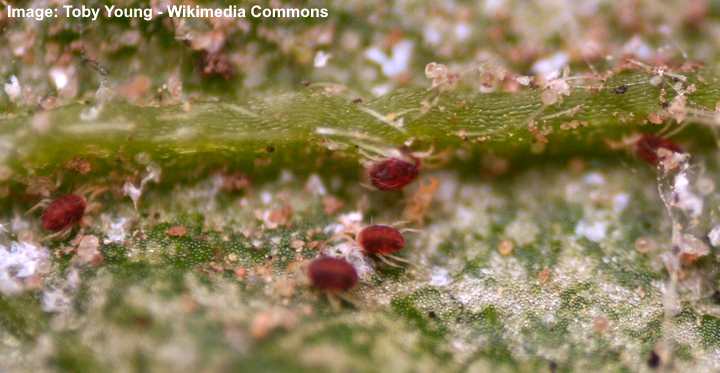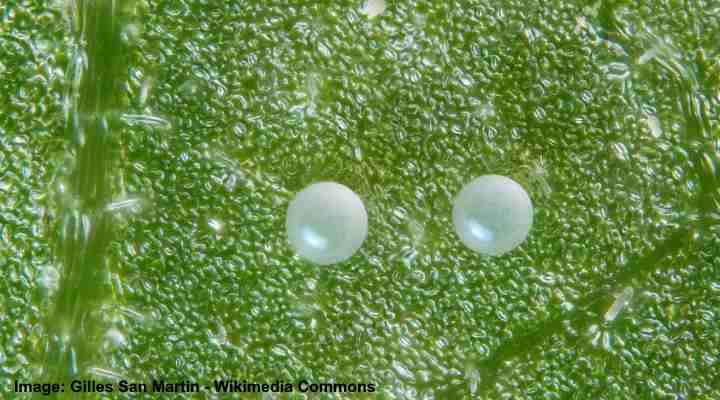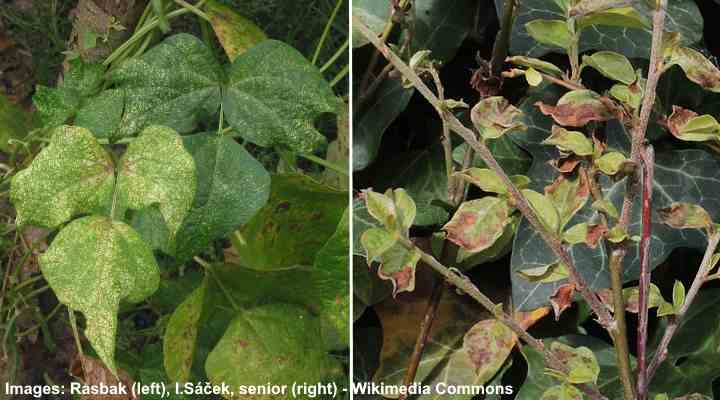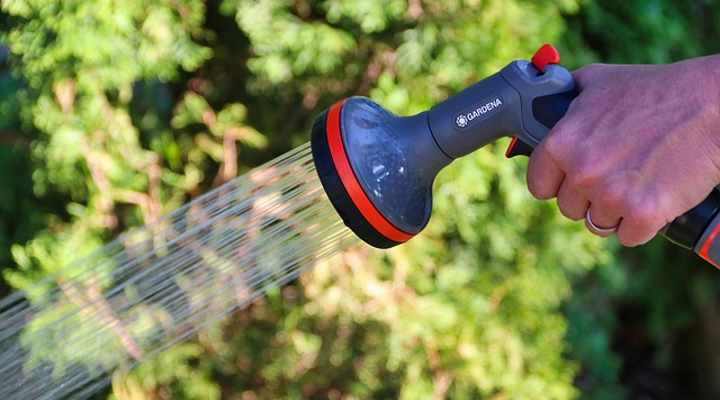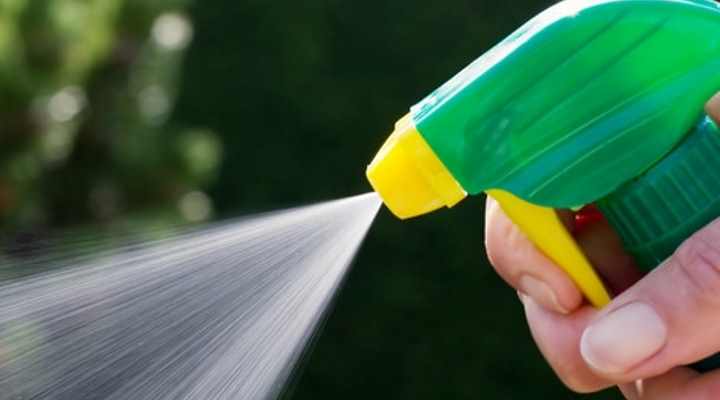Small destructive mites that can infest indoor and outdoor plants are called red spider mites. By spinning webs on plant leaves, feeding on plant tissue, and sucking plant sap, red spider mites cause plant damage. Underneath leaves, the little red creatures are difficult to find.
Yellow or brown patches on leaves, webbing, and weak plant development are all Telltale symptoms of red spider mites. The mite family Tetranychidae includes the red spider mites (Tetranychus urticae). These houseplant pests are not true insects, despite the fact that they are called so. Red spider mites are not insects, but they belong to the class Arachnida and are related to spiders.
The difficulty of identifying red spider mites makes it difficult to eliminate them. Additionally, these tiny red creatures eat a variety of plants and crops. A plant may be killed by a severe infestation of red spider mites. The best techniques for eradicating red spider mites on plants are covered in this article.
You’ll learn about simple ways to prevent red spider mites from infesting your indoor plants, in addition to natural remedies for eliminating these red “bugs.”
What Do Red Spider Mites Look Like?

Red spider mites (Tetranychus urticae) are tiny red dots that crawl around the underside of plant leaves in the images below. Since the females are only up to 0.4 mm long, finding these little mites can be difficult. Unfortunately, red spider mites only become noticeable when they have a substantial infestation. Before you see the plant-feeding pests, you’ll usually notice webbing beneath leaves.
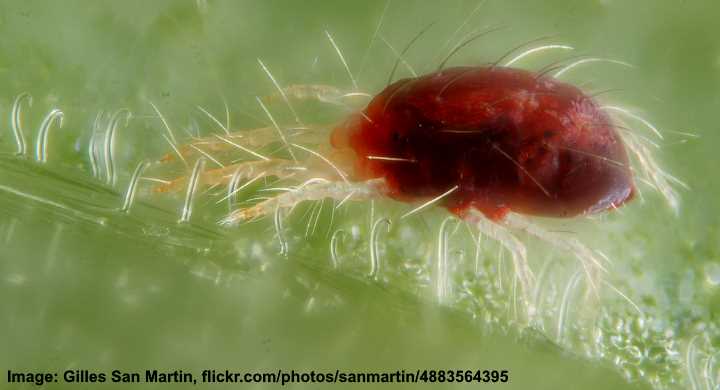
Red spider mites have oval bodies, as seen in this close-up picture (enlarged). These red mites have eight legs, like all types of spiders. Mites have spines protruding from their legs, according to close-up photographs. Webs on plant leaves and stems are usually the first indication of red spider mites.
It’s possible that you’ve got regular spider mites if you see tiny white, green, yellow, or brown dots travelling on leaves. These bothersome insects eat plant juices and spin protective webs, much like the red variety. Red spider mite activity on the delicate silk web structures they spin might also be visible.
Red spider mites are distinguished from other houseplant pests by their web-spinning behavior. Little pests like aphids and thrips, for example, can also damage plants. They don’t, however, spin webs on plant leaves.
Red Spider Mites Life Cycle
The life cycle of red spider mites begins with tiny eggs attached to the fine webbing, as seen in this close-up photograph. The eggs develop into larvae after a few days. The maturity and completion of the life cycle of red spider mites takes between five and twenty days in ideal circumstances.
Females of the adult red spider mite can lay hundreds of eggs in just two to four weeks. Hot, dusty, and dry circumstances are the optimum breeding conditions for red spider mites. It may take less than a week to complete a generation in these circumstances. It’s also important to remember that overwatering flowers may cause worry and make them vulnerable to red spider mite infestations.
Spider mites that cause redness generally don’t reside in the soil. Red spider mites, on the other hand, prefer to live and reproduce beneath the leaves of decorative plants, trees, and crops. Before you know it, you’ve got pest problems because you can’t see these little red creatures breeding and multiplying. It’s important to control red spider mite populations by understanding their life cycle.
Keeping the soil slightly moist and the air humid helps prevent many plant pests, including mites, because they prefer dry conditions to breed. As a result, to avoid pest and disease issues, it is essential to use the appropriate methods when watering houseplants.
How to Identify Red Spider Mites on Houseplants and Outdoor Plants
Examining closely for signs of webbing beneath leaves is the most effective way to identify red spider mites on a leaf underside. Eggs and larvae are protected from predators by the delicate spider webs. You’ll only notice many red dots crawling on leaves when their numbers become large.
Between plant stems and leaf petioles is the most common place to find red spider mite activity. Even a few silky web threads can reveal signs of mite mischief. The size and density of the webs will grow in direct proportion to the number of red spider mites present.
It’s also a good idea to check the plants at garden shops for spider mite activity on a regular basis. If you want to check for red spider mites, put a sheet of white paper beneath the leaves. Little reddish dots will fall onto the paper if you tap the foliage sharply, indicating that the plant has spider mites. They’re easier to see this way than on green leaves.
The damage caused by red spider mites to plants is another method of identification. Piercing-sucking mouthparts are found on red spider mites. They feed on plant cells by penetrating plant tissue with them. Red spider mites cause yellowing leaves, spots on leaves, withered flowers, and leaf loss as a result of their harm.
Using a 10x or 15x hand lens to closely examine plant foliage is the only way to positively identify red spider mites. Tiny red bug-like creatures with oval bodies and eight spiny legs are to be found. Examining plants for webbing and threads of fine silk dangling from stems is, however, the most common way to identify spider mite.
Red Spider Mite Plant Damage
Spider mites suck juice and plant cells from leaves, causing damage to the plants. Plant leaves aren’t very vulnerable to a few bug bites. However, red spider mite populations may rapidly increase and harm plant development. Light dots on leaves are the first signs of red spider mite damage. The leaves turn yellow and fall off as a result of this.
Red spider mite leaf damage—On the upper sides of the leaves, light yellow spots are caused by piercing and sucking plant tissue. When leaves die, they turn brown and yellow as they decompose. The leaves of the plant eventually fall off. Roses, yearly plants, and most indoor plants are all susceptible to the damage caused by red spider mites.
Red spider mite damage on crops— Red spider mites harm crops and reduce their productivity, apart from causing leaf damage. Mite destruction lowers the number of fruit and vegetables in dry, hot weather. Over 200 plant species, including tomatoes, eggplant, cucumber, squash, and numerous greenhouse crops, are afflicted by red spider mites.
Where Do Red Spider Mites Come From?
Almost anywhere may bring minuscule red spider mites. Spider mites can enter a home in a variety of ways, including on infested plants. On hot, dry summer days, however, the wind can blow the tiny red bugs through windows. Indoor plant infestations can be caused by using unsanitary garden soil for houseplants.
How to Get Rid of Red Spider Mites on Plants
Isolation of the plant from other houseplants is the first step in eradicating red spider mites. After that, turn the shower on them to physically remove as many of the sap-sucking mites as possible. Use a natural remedy for indoor plant pest control to help get rid of the pests for good. Chemical pesticides to kill spider mites should be avoided. Long-term pesticides are rarely effective. Moreover, pests that live in the home may become resistant to pesticides, making them more difficult to get rid of.
Red spider mites can be rid of using home remedies with some patience and diligence. Natural substances in your kitchen are normally non-toxic and won’t harm family or pets, in addition to being incredibly successful. The below-mentioned techniques for eradicating red spider mite are the most successful.
Prune Affected Leaves to Get Rid of Red Spider Mites
Red spider mites may be physically eliminated from the plant by trimming away infested leaves or stems. To prevent the nasty houseplant bugs from spreading to other plants, handle the cut foliage carefully. Next, never put infected plant parts in your compost, but instead throw them away in the trash. Pruning is just the start in your fight against red spider mites, so it’s important to remember that.
To interrupt the lifecycle of the remainder of the plant and eliminate the bothersome mites, you’ll have to treat it again. Sadly, you may have to cut your losses and throw the whole plant away in severe red spider mite infestations.
Shower Plants to Remove Red Spider Mites
Spider mites may be dislodged from beneath plant leaves by spraying them with water. All you have to do is rinse the affected plant with lukewarm water in the bathroom or outside. To manage red spider mites on greenhouse plants, simply turn the hose on them to dislodge the pests using a similar technique.
Use Soap Spray to Kill red Spider Mites on Plants
Kill red spider mites on plants by spraying them with soap and hot water. Place 1 tsp. of salt in a cup of water. In a spray bottle, mix 1 quart (1 l) of warm water with Castile soap or liquid dish soap. To kill the tiny red bugs and their larvae, thoroughly douse both sides of the plant’s foliage.
A soapy solution and a sponge can be used to clean the plant’s leaves in another natural pest management method. You’ll clean the leaves and improve the appearance of your houseplants, in addition to removing mites from them.
Spider mites are killed on contact by a soap solution that consists of oils and fatty acids. The plant bugs are suffocated and their outer layer is penetrated by the soapy solution. Spider mites may be treated safely with soap and water, which is an advantage.
Organic gardening methods can also be used with organic-based soaps. Soap sprays are effective houseplant pest treatments for mealybugs, scale insects, aphids, whitefly, and thrips.
Get Rid of Red Spider Mites on Plants with Neem Oil
To get rid of red spider mites for good, use an organic neem oil solution. 2 tsp. of salt and a little bit of pepper 1 tsp. of organic neem oil Using 1 quart (1 liter) of warm water, mix Castile soap. To get rid of red spider mites, fill a spray bottle with water and spray both sides of the leaves. Neem oil is said to include a natural pesticide called azadirachtin, according to scientific researchers.
Neem oil solutions are quite effective at killing Tetranychus urticae, according to research. It led to 100% mortality in certain situations. Neem oil is non-toxic for people and animals, and it has no effect on birds, worms, or other beneficial garden organisms, making it a natural miticide.
Use Rubbing Alcohol to Kill Spider Mites on Plants
To exterminate red spider mites right away, wash down infested plant leaves with 70 percent isopropyl alcohol. You may also mix equal parts of rubbing alcohol and water to make a bug spray that will kill mites. To eliminate pests, spray the foliage with the solution and then wipe them clean.
Remember that some sensitive plants’ leaves may be damaged by alcohol. Dilute the solution with one part alcohol and three parts water if the alcohol affects the leaves. Aphids, mealybugs, and scale insects can all be eliminated using rubbing alcohol as a houseplant remedy.
Vinegar Spray to Get Rid of Red Spider Mites on Houseplants
Spider mite infestations can be eliminated with the help of vinegar, which is an acidic substance. Using 1 quart (1 l) lukewarm water, combine one-quarter cup white vinegar, one tablespoon baking soda, and a few drops Castile soap. Spray on plants displaying symptoms of spider mites using a spray bottle containing the ingredients.
Rosemary Oil Spray to Eliminate Red Spider Mites from Indoor Plants
Against red spider mites, use a rosemary extract spray as a natural insecticide. Add one teaspoon rosemary essential oil to a spray bottle filled with warm water. To eliminate red spider mites, shake vigorously to combine the components and apply liberally to plant leaves.
Alternatively, a cotton wool ball dipped in rosemary solution will work. To decrease the number of red spider mites on plants, spray both sides of the plant leaves with natural miticide. Rosemary oil has been shown to be a effective pest controller for species of Tetranychidae in one scientific investigation. According to scientists, a rosemary soak is effective for “small-scale integrated mite management programs involving two-spotted mites.”
Biological Insecticides to Eradicate Red Spider Mites
Red spider mites (Tetranychus urticae) are a type of biological insecticide that may help exterminate the infestation on edible greenhouse plants. Treating tomato plants with Beauveria bassiana, a natural soil fungus, was found to be effective at killing two-spotted spider mites in one university research.
Release Beneficial Insects To kill Red Spider Mites on Outdoor Plants
In hot, dry environments such as greenhouses and summer gardens, use predatory insects to control red spider mite infestations. Spider mites are prey for predatory mites, ladybugs, and lacewings. According to the University of California, if you want to eliminate spider mites properly, you’ll need roughly one predatory bug for every ten.
How to Prevent Red Spider Mites on Plants
Spider mite infestations may be prevented rather than eradicated, which is easier. Houseplants need to be cultivated in ideal circumstances, and they need to be watered correctly. Red spider mite populations can be avoided by keeping the soil moist, with medium to high humidity, and regularly wiping leaves. On houseplants, here are some more useful tips for preventing spider mites:
Thoroughly check new houseplants for signs of red spider mites
Before bringing new plants home, carefully inspect any plant for webbing or dangling silky threads. Other symptoms of various houseplant pests, such as red spider mites, might include leaf spots, yellowing, and wrinkling. You should check for bugs, soil gnats, or other creepy crawlies on any houseplants that you keep outside in the summer.
Isolate new houseplants to prevent red spider mite infestations
Whenever possible, keep any new plants out of your home. Microbial and practically undetectable, red spider eggs and larvae Aphids, thrips, and other insects may also be hiding in the plant leaves. You may see any insect activity and take proper action for two weeks by isolating plants.
Protect plants from direct sunlight and hot temperatures
Red spider mites can’t survive if houseplants are kept too warm or exposed to direct sunlight. In dry leaves and hot temperatures, red spider mites reproduce quickly. By placing plants behind sheer curtains, if possible, keep them away from direct sunlight. The leaves of this kind of plant are protected and red spider mites are prevented.
Wipe plant leaves regularly to remove red spider mites
To keep leaves moist and prevent red spider mites, regularly clean houseplant plant foliage using a damp cloth. You’ll also clean dust from leaves, which boosts photosynthesis and boosts plant health, not only removing spider mites.
Keep humidity high to prevent red spider mites on houseplants
Spider mites dislike humid settings. Additionally, for healthy development, several tropical plants need higher humidity than usual. Placing houseplant pots on a pebble and water tray, spraying leaves frequently, and using a damp cloth to wipe leaves are all simple ways to increase humidity.
